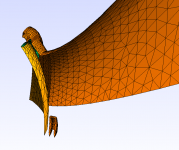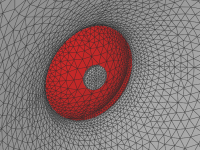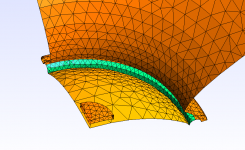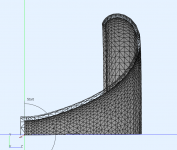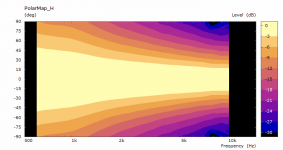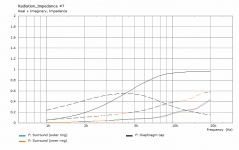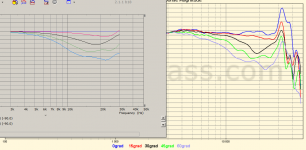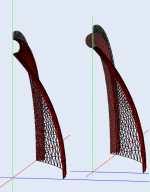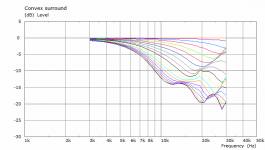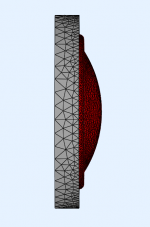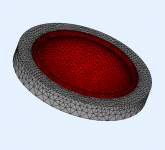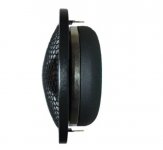Haven't you considered sharing the existing results?...I have used your tool to make some 3D printed prototypes with a dome as a source. I have done several versions to try to find a good opening angle at the throat. It's quite good, but I'm not completely satisfied yet.
I am planning to share, but I have thought I should not bore the forum with all the failed attempts.Haven't you considered sharing the existing results?
I can show some measurements of the current model when I'm back at the computer in the beginning of next week.
I have worked with the throat overhanging the surround somewhat, so it's very cool if you would include this possibility in your tool.
In fact, almost anything axisymmetric is possible with the new scripting add-on (the waveguide doesn't have to be axisymmetric, only the throat does) -
Even phase plugs for compression drivers but it would probably be too tedious doing it this way. Definitely possible.
Even phase plugs for compression drivers but it would probably be too tedious doing it this way. Definitely possible.
Attachments
Last edited:
mabat, what Bliesma do you have dimensions for? I've been told the T25 aluminum and Be domes have different geometries.
The first quick attempt to see some effect
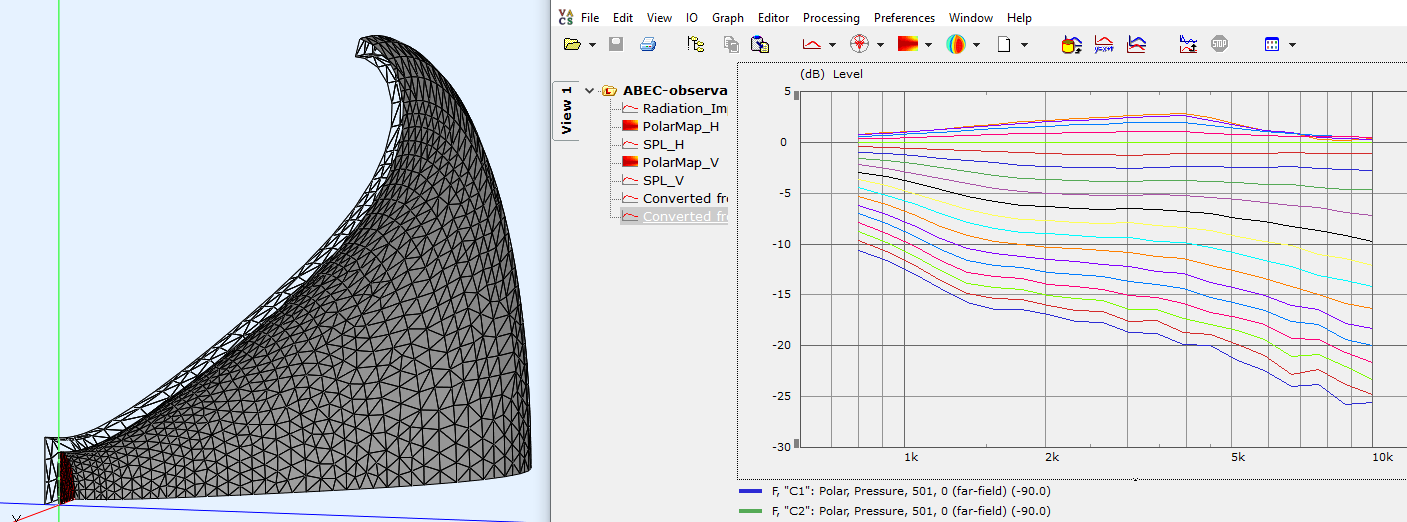
This is more or less what I had in mind. Good to see the sims

Last edited:
I am planning to share, but I have thought I should not bore the forum with all the failed attempts.
I can show some measurements of the current model when I'm back at the computer in the beginning of next week.
I have worked with the throat overhanging the surround somewhat, so it's very cool if you would include this possibility in your tool.
My entire post history is full of failure, people seem to enjoy it 🙂
Just a try - 1.4" throat, free standing, only ⌀280 mm:
(It's still more on the "spiral" side, I'd prefer it more on the "beamwidth control" side. Now it's possible to freely mix the two.)
Interesting to see improved 'loading', detriment of some beaming.
Attachments
Last edited:
My entire post history is full of failure, people seem to enjoy it 🙂
Failure is success in progress (Einstein) 🙂
... detriment of some beaming.
Should be: at the cost of some narrowing.
I was playing a bit with the Bliesma waveguide but so far nothing I would really like. Anyway, this is the tweeter simluated alone in a infinite baffle (just the diaphragm with surround) compared to the measured data from HiFiCompass (.com). The radiation impedance included, to put things into perspective -
Attachments
BTW, this would happen if the surround was convex on this tweeter -
(Made by changing sign of one number in the script file 🙂 )
(Made by changing sign of one number in the script file 🙂 )
Attachments
Last edited:
In the example found in the Appendix C - Source definition script, I can not see that you have specified the coordinates for the point WG0. Is this not necessary? Is the line between p5 and WG0 only defined by the zoff parameter?
The point WG0 is pre-defined automatically at [0, d/2], where d is the throat diameter of the horn (=Throat.Diameter). This is about the only way to ensure the mesh is cohesive. So the line p5 - WG0 is simply a line between the point p5 and this point.
The parameter zoff is used when the origin for z axis in the drawing is not where the horn starts, like in the example. They need to match (horn starts always at z=0, this is the plane of the throat).
I will start a thread dedicated to version 4.6 in the "Software Tools" section and leave this thread for a more general discussion. I'm still not finished with the documentation (a lot of new things)...
The parameter zoff is used when the origin for z axis in the drawing is not where the horn starts, like in the example. They need to match (horn starts always at z=0, this is the plane of the throat).
I will start a thread dedicated to version 4.6 in the "Software Tools" section and leave this thread for a more general discussion. I'm still not finished with the documentation (a lot of new things)...
I was playing a bit with the Bliesma waveguide but so far nothing I would really like. Anyway, this is the tweeter simluated alone in a infinite baffle (just the diaphragm with surround) compared to the measured data from HiFiCompass (.com). The radiation impedance included, to put things into perspective -
That's look pretty great 🙂
Sorry if I've missed it in the thread (or manual), but is there somewhere you've written instructions or explained the parameters for how to model a dome?
This is a bit ahead of what is currently available. Bidland made waveguide for a dome tweeter so I already showed how to define a dome contour in the other thread: Acoustic Horn Design - The Practical Way. This will be available with the 4.6 release.
When talking about it, for example simulating even a free standing dome twetter like this will be an easy thing. I only need to document it.
Attachments
Last edited:
This is a bit ahead of what is currently available. Bidland made waveguide for a dome tweeter so I already showed how to define a dome contour in the other thread: Acoustic Horn Design - The Practical Way. This will be available with the 4.6 release.
Ok, many thanks 🙂 Any idea when 4.6 will be out? (No pressure of course!)
I'm really not able to say.
- Now when I think about it, by means of this new source definition feature it will be possible to simulate just any horn profile you can imagine, as long as it is axisymmetric - simply define it as the part of the source (from line segments) and add nothing more. Probably a profile import function would make more sense for that, it would allow for the other non axisymmetric features (like morphing to rectangle), this is just a by-product.
- Now when I think about it, by means of this new source definition feature it will be possible to simulate just any horn profile you can imagine, as long as it is axisymmetric - simply define it as the part of the source (from line segments) and add nothing more. Probably a profile import function would make more sense for that, it would allow for the other non axisymmetric features (like morphing to rectangle), this is just a by-product.
Last edited:
I was playing a bit with the Bliesma waveguide but so far nothing I would really like. Anyway, this is the tweeter simluated alone in a infinite baffle (just the diaphragm with surround) compared to the measured data from HiFiCompass (.com). The radiation impedance included, to put things into perspective -
Whether a tweeter works with a waveguide largely depends on the size, shape and the material of the dome and the surround.
Ring radiators usually work well, as do flattened/segmental domes. Hemispherical domes are generally less suited as the radiation pattern seems to interfere with the waveguide, especially if it's deep.
The large dome of the T-34A appears to be (almost) hemispherical and therefore may not be the ideal candidate for waveguide loading.
Attachments
Last edited:
- Home
- Loudspeakers
- Multi-Way
- Acoustic Horn Design – The Easy Way (Ath4)
